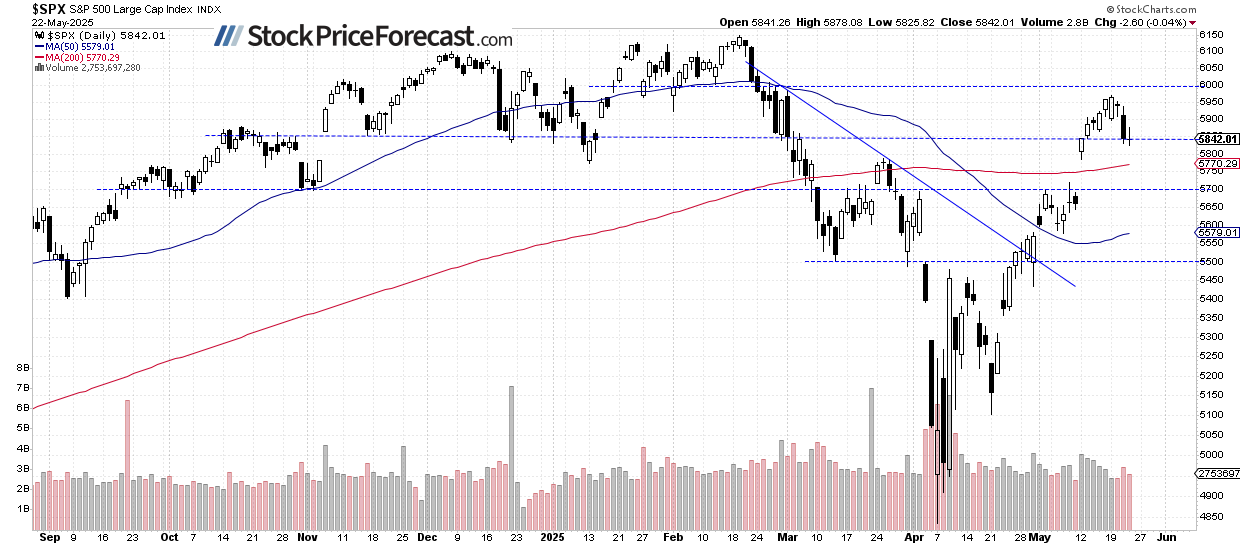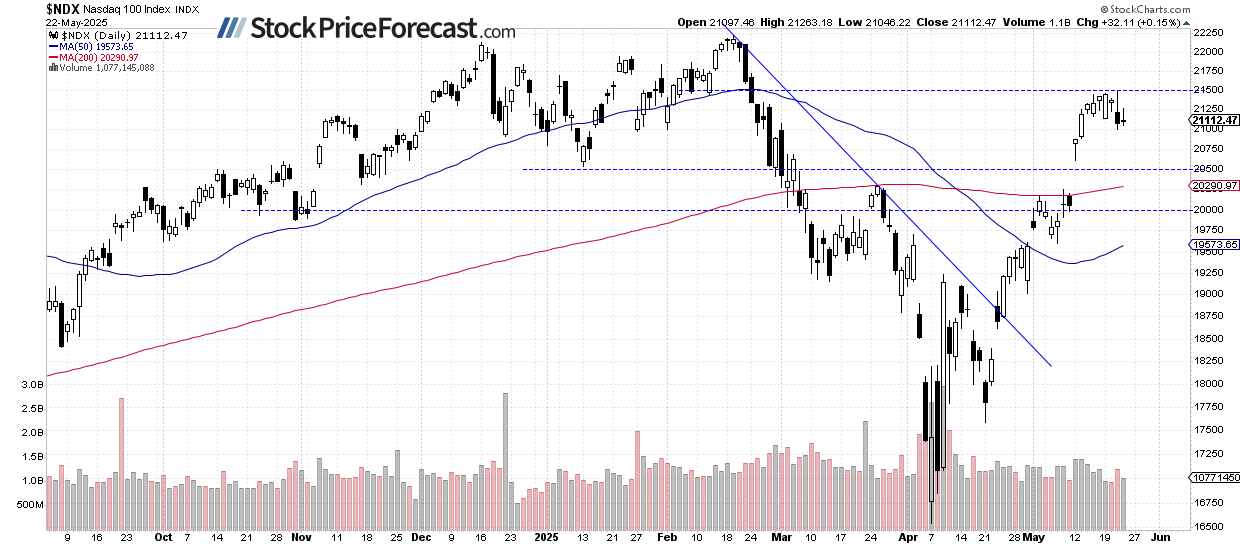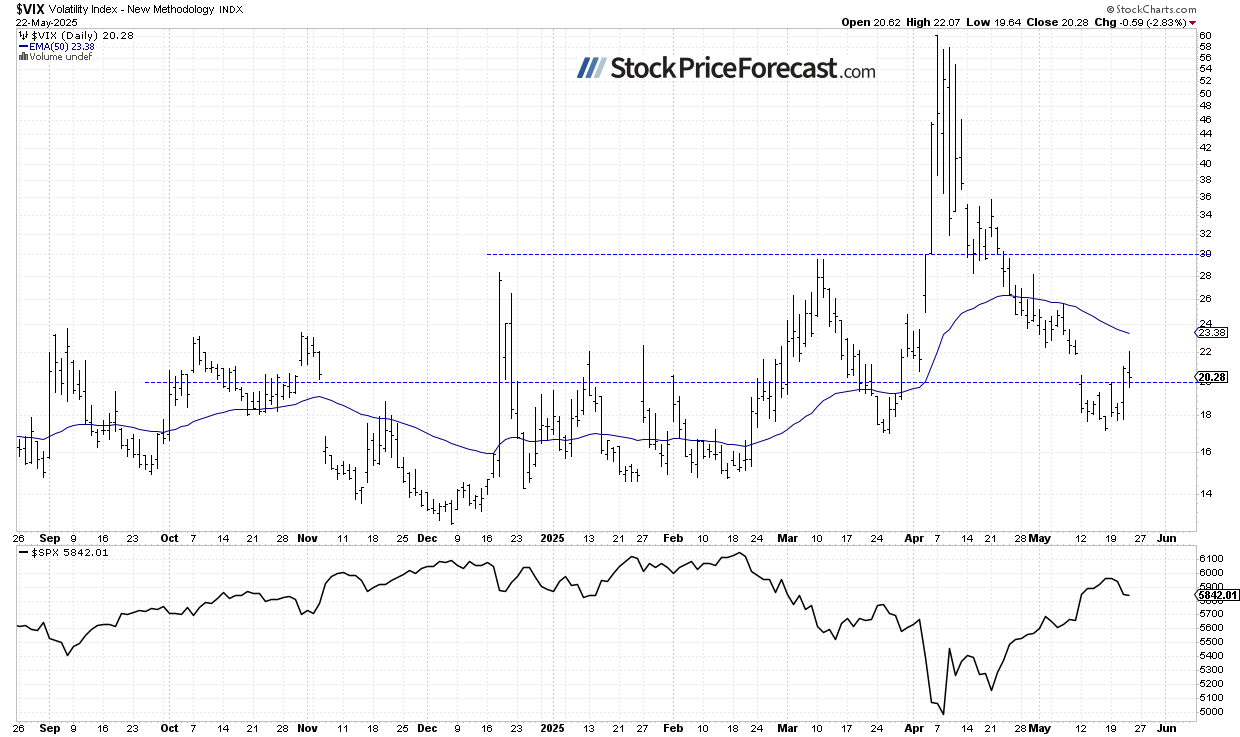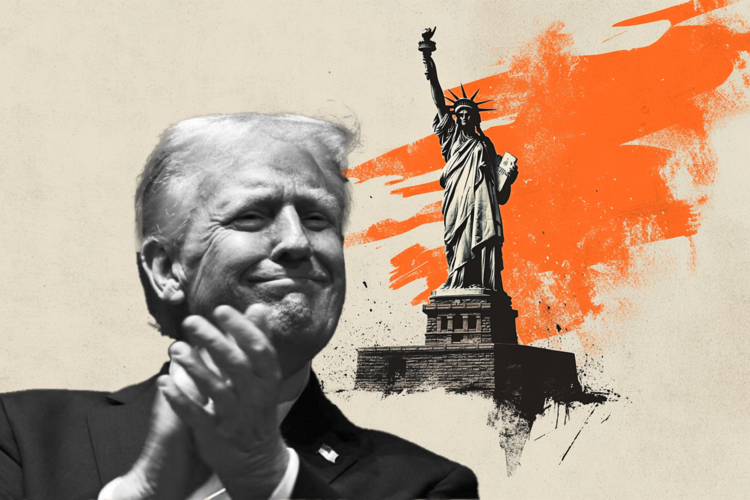Market faces 1.6% decline as trade tensions resurface – is this the start of a new downtrend?
On Thursday, the S&P 500 closed down 0.04%, extending Wednesday’s sharp 1.6% decline. This morning, however, futures point to another 1.6% drop at the open, following President Trump’s surprise announcement of tariffs targeting Apple and the European Union.
This sharp sell-off highlights the ongoing uncertainty that tariff policy continues to create for investors, just as markets were showing signs of stabilization after their recent rebound.
Adding to the pressure, the 30-year Treasury yield remains above the critical 5% mark – levels not seen since the financial crisis – driven by growing concerns over the federal deficit following progress on Trump’s new tax bill in the House.
The combination of rising yields and renewed trade tensions creates a difficult environment for risk assets, particularly growth stocks that have led the recent rally.
Investor sentiment has further improved, as reflected in the Wednesday’s AAII Investor Sentiment Survey, which reported that 37.7% of individual investors are bullish, while 36.7% are bearish.
The S&P 500 is pulling back from its January–February consolidation.

Nasdaq 100: Pullback likely to continue
The tech-heavy Nasdaq 100 is expected to open 1.9% lower, breaking below the 21,000 level. I think that this still appears to be a correction within the uptrend, with potential support near 20,500.

VIX moves back above 20
Yesterday, the volatility index remained above the key 20 level yesterday, following Wednesday’s equity sell-off, indicating rising fear in the market.
Historically, a dropping VIX indicates less fear in the market, and rising VIX accompanies stock market downturns. However, the lower the VIX, the higher the probability of the market’s downward reversal. Conversely, the higher the VIX, the higher the probability of the market’s upward reversal.

S&P 500 futures contract: New local lows
This morning, the S&P 500 futures contract extended its decline, dropping below the 5,800 level.
Support remains around the 5,750–5,800 level, marked by previous price fluctuations.

Conclusion
The S&P 500’s expected 1.6% opening decline would push the index toward the critical 5,700 support zone. This level has provided support during previous declines, and a break below could signal the start of a more significant downtrend rather than just a brief pullback.
The failure to break above the 6,000 level during the recent rally now appears more significant, with the market potentially preparing to retest lower levels.
Here’s the breakdown
- Tariff shock is dragging sentiment, with S&P 500 futures down 1.6% this morning.
- On Monday, the S&P 500 reached its highest level since February, nearing the 6,000 level and extending gains for those who bought based on my Volatility Breakout System.
- The 6,000 level remains a key resistance that the market failed to breach.
Want free follow-ups to the above article and details not available to 99%+ investors? Sign up to our free newsletter today!

